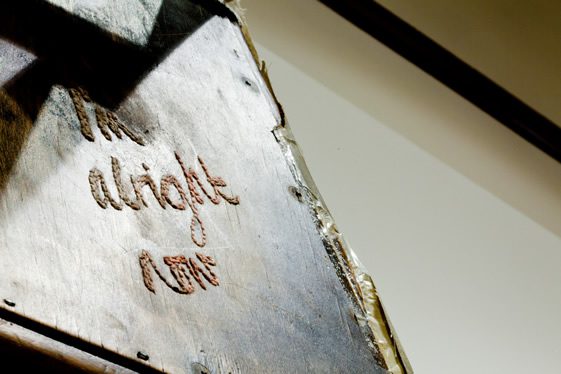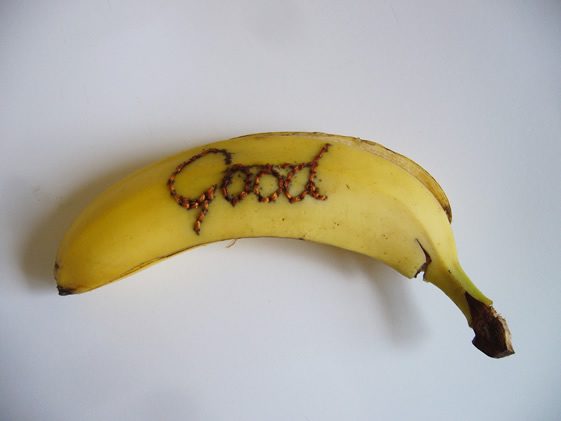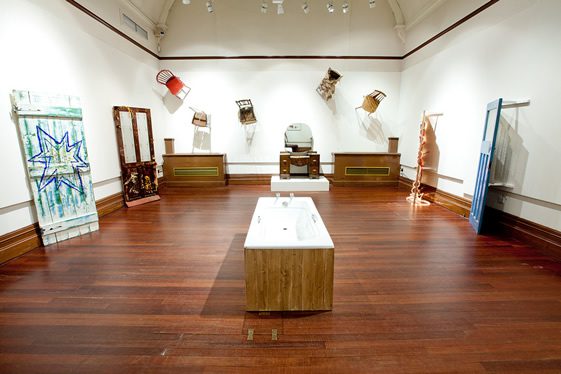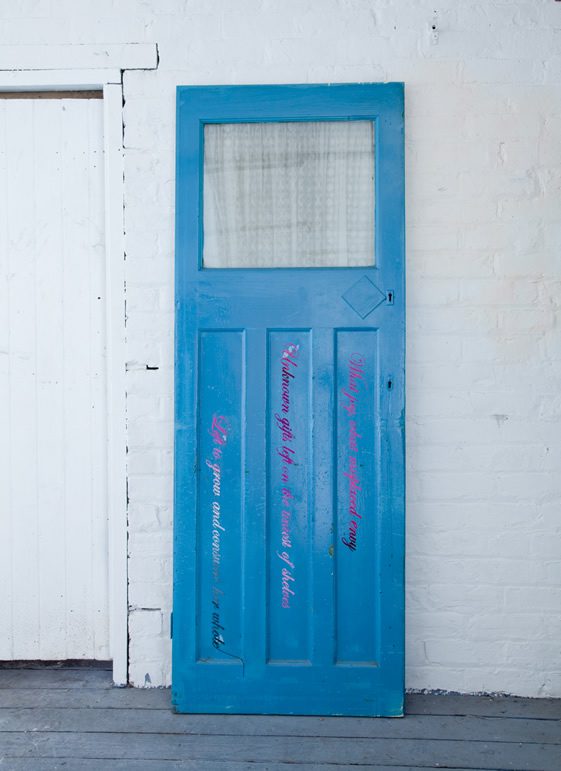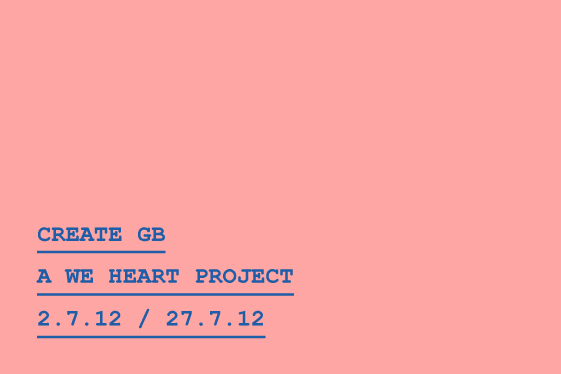We’re all for a hearty bit of convention prodding here at We Heart, hell, we even endorse the full on bullying of the ‘orrible little conformist social behaviour. And, it’s that blatant disregard for genre, tradition, and protocol that makes us want to give Manchester-based Sarah Greaves a bloody big hug. Dumping considerations for what should be done, and in what way, carelessly in the bin (where they belong); Greaves takes the quintessentially British tradition of embroidery, and graffitis found objects with it. Yep, embroidery graffiti: you’ve got to love the girl.
Straddling her art somewhere between the DIY cultures of guerrilla-knitting, Duchamp’s Readymades and Tracey Emin’s neon sloganeering; Greaves vandalises her found canvases with emotive, political and humorous messages – it’s evocative, powerful and, most of all, beautiful stuff. We caught up with Sarah for a quick chat about all things Create GB…
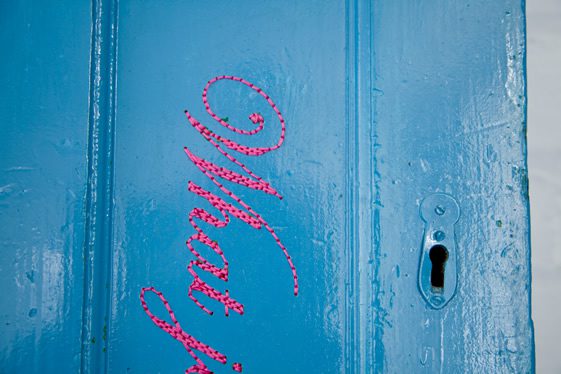
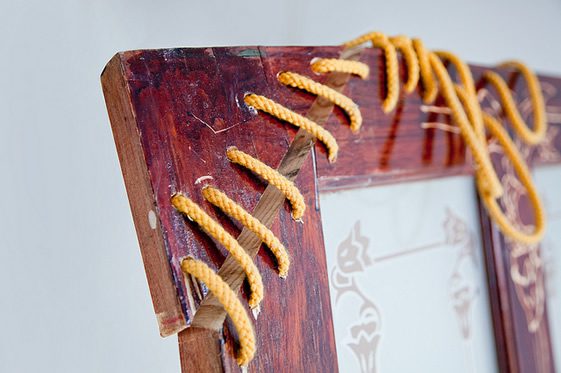
Has being British had an effect on your discipline?
Being British definitely has an effect in that my whole frame of reference and my inspiration is obviously culturally bound. My embroidered doors explore the public and the private self, about what we present to the world and what we keep hidden even to close friends. This is certainly a very British concern and the ‘stiff upper lip’ is something that remains, on some level, a British chararcteristic.
I read recently that the Lonely Planet’s description of Britain included ‘celebrity obsessed’, this obsession with looks and image is also something I explore with my embroidered food, fridge, dressing table and toaster. I’m interested in the language the cosmetics and diet industry use and the way in which we absorb the language to objectify ourselves and the world around us. The word Carbs on the toaster relates to a certain infamous diet that wiped out a whole food group and made bread the waistline’s most feared enemy.
The Swinging ’60s, punk, Hacienda-era Manchester… is there one period of intense British creativity that you’d like to have been a part of, and why?
I would love to have been around in the 1950s and ’60s during the Pop Art Movement. I love the boldness of the colours and the use of popular mainstream imagery meant it was really accessible. Some of my work references that with my found objects and text that comes straight from popular culture and the media. The embroidered gate is as if someone has just burst through it with a Lichensteinesque comic book explosion.
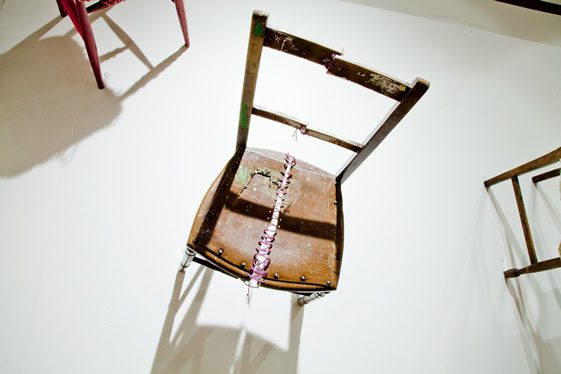
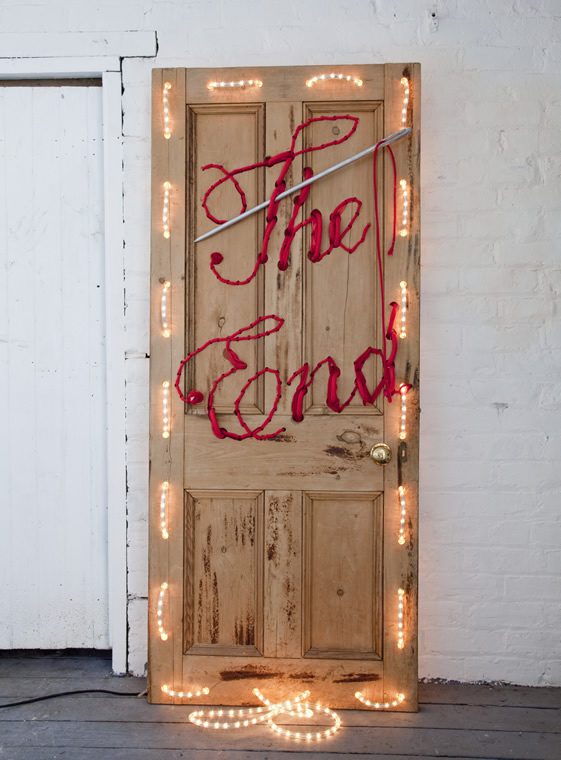
Are there any quintessential British traditions that inform your work?
The tradition of embroidery obviously informs my work. The craft has been informally passed down through generations and my grandmother taught me as a child. Although my embroidery is less fireside stitching, and more workshop drilling!
Which sport would you like to compete in at London 2012?
I’m not sure I could compete but I could certainly embroidery a few hurdles.
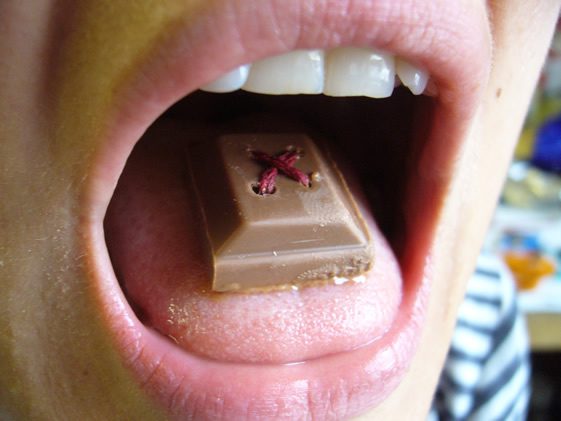
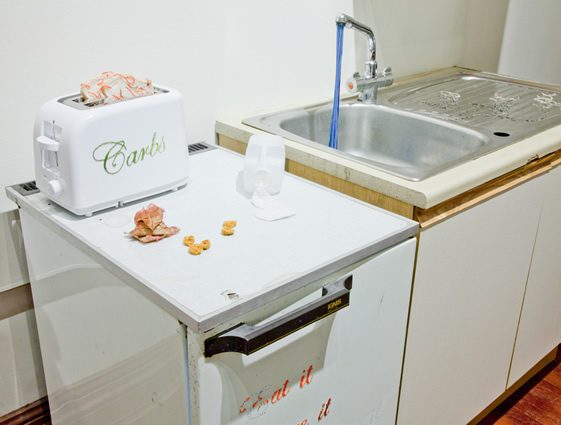
The best piece of advice you’ve ever been given…
I read an interview with the artist Marc Quinn in the Guardian, when asked what advice he’d give to a young artist he repiled “just get on with it”, for a procrastinating artist that’s a good mantra to have. He also said that he used to drink vodka in his studio to keep warm but I’m not sure that powertools and vodka mix particularly well.
What’s next for you?
I’ve got work in the exhibition ‘Odds Against Tomorrow’ at Bearspace Gallery, Deptford, London, and an installation at Basement of Shoreditch Town Hall in January next year. Fingers crossed I’ll be off to Armenia on an artists’ residency in September researching Aremenian embroidery and the nature of treasured objects passed down in families post genocide in 1915.
